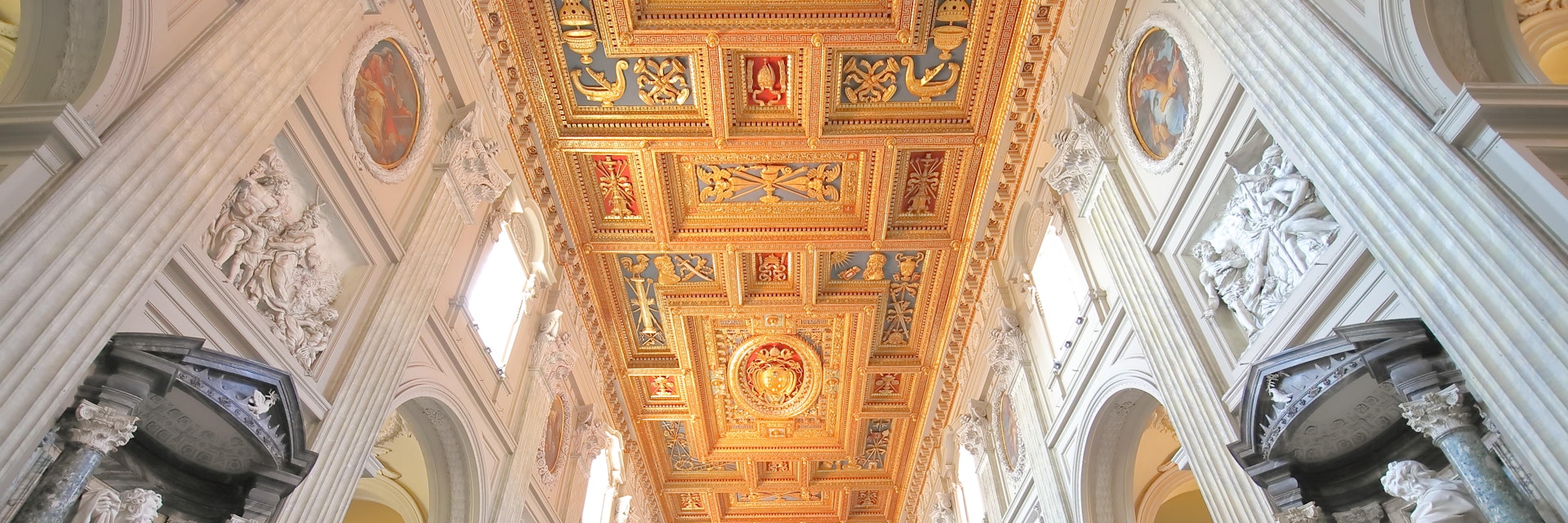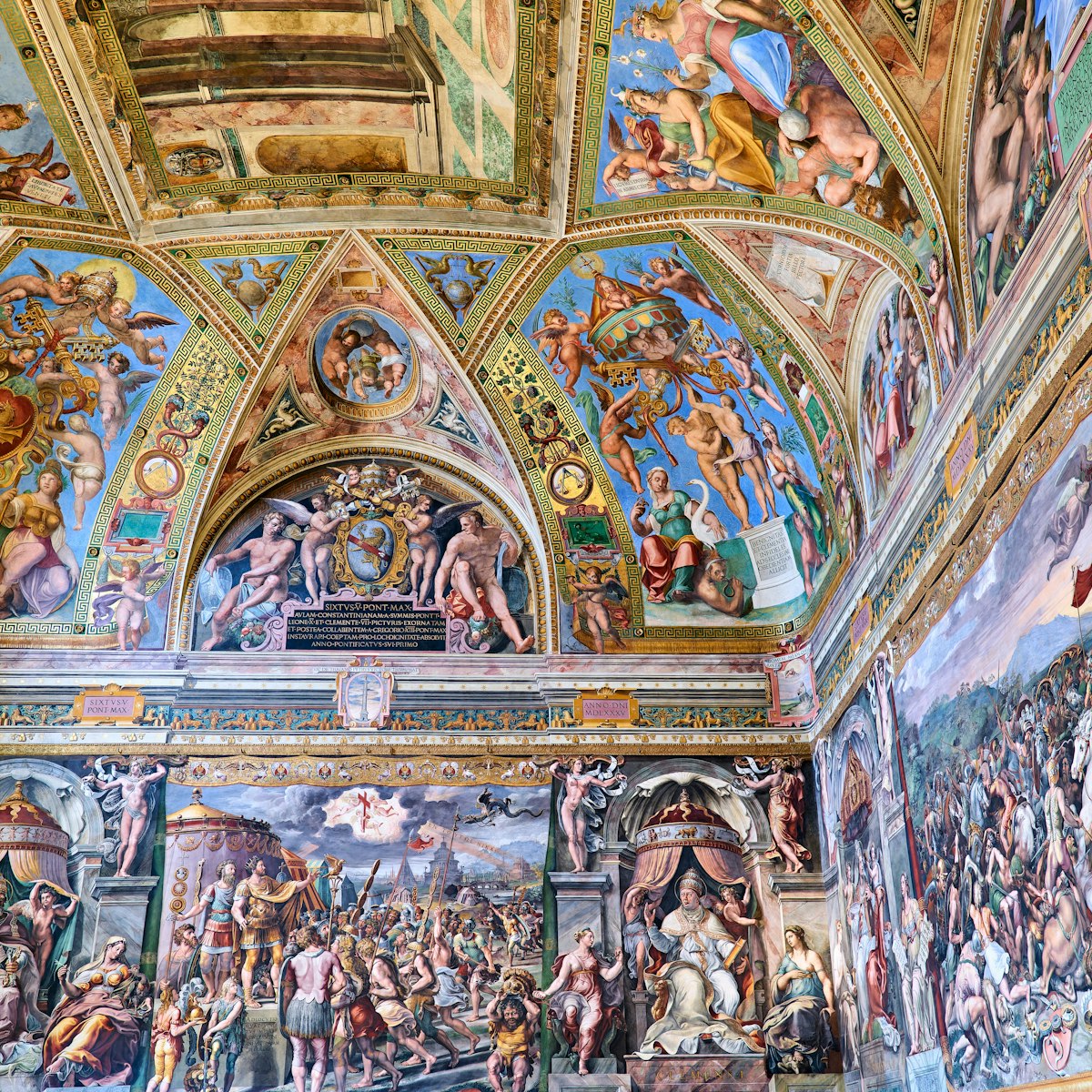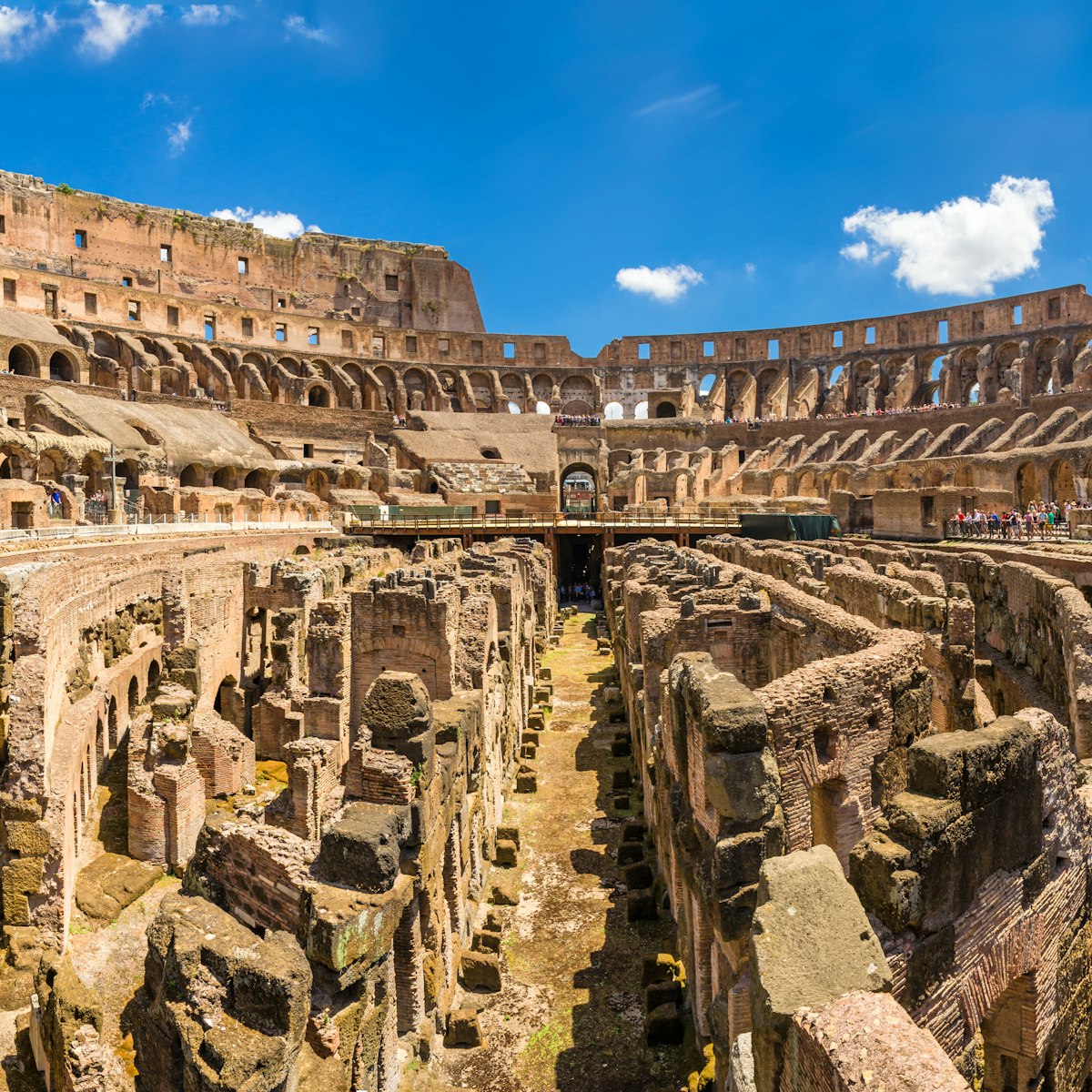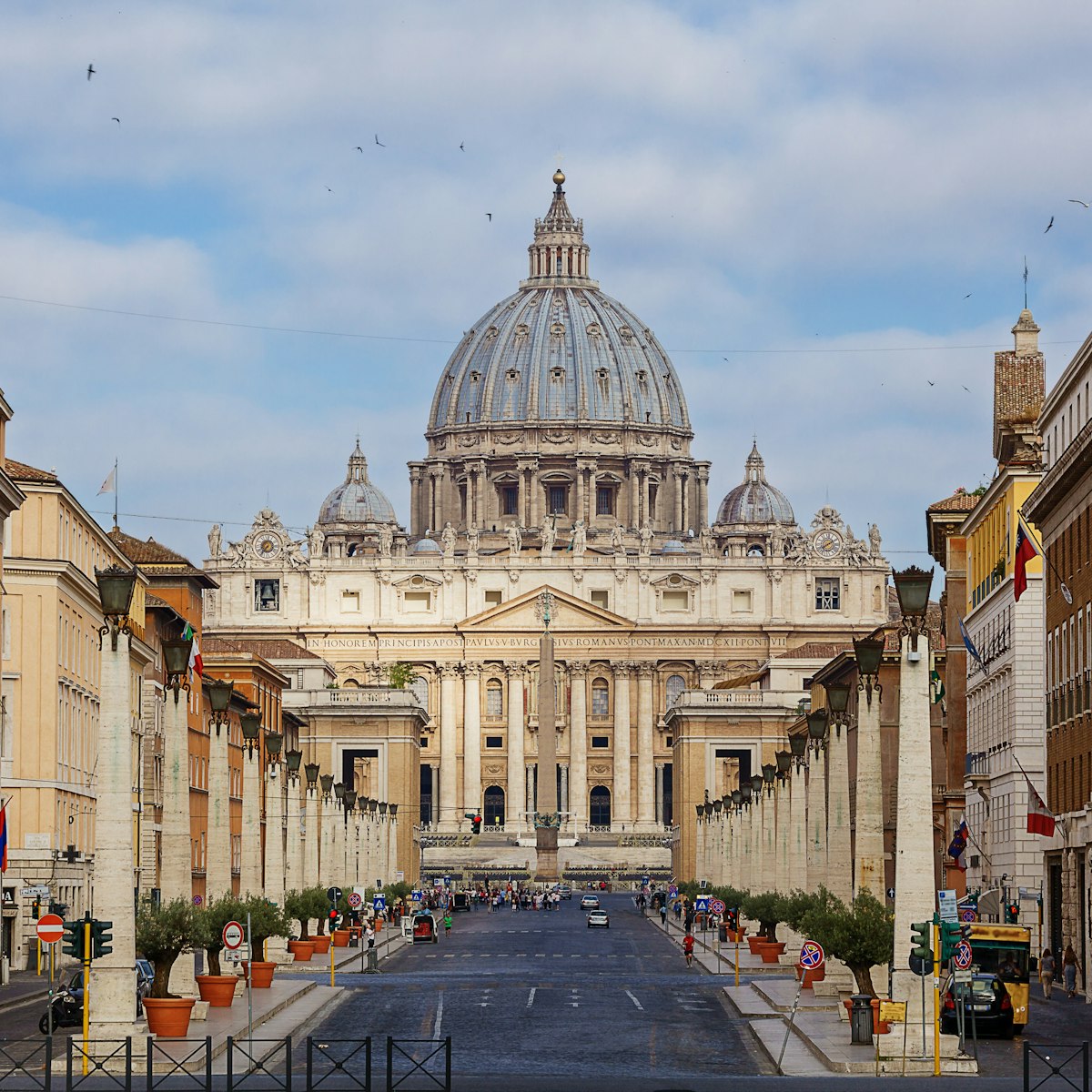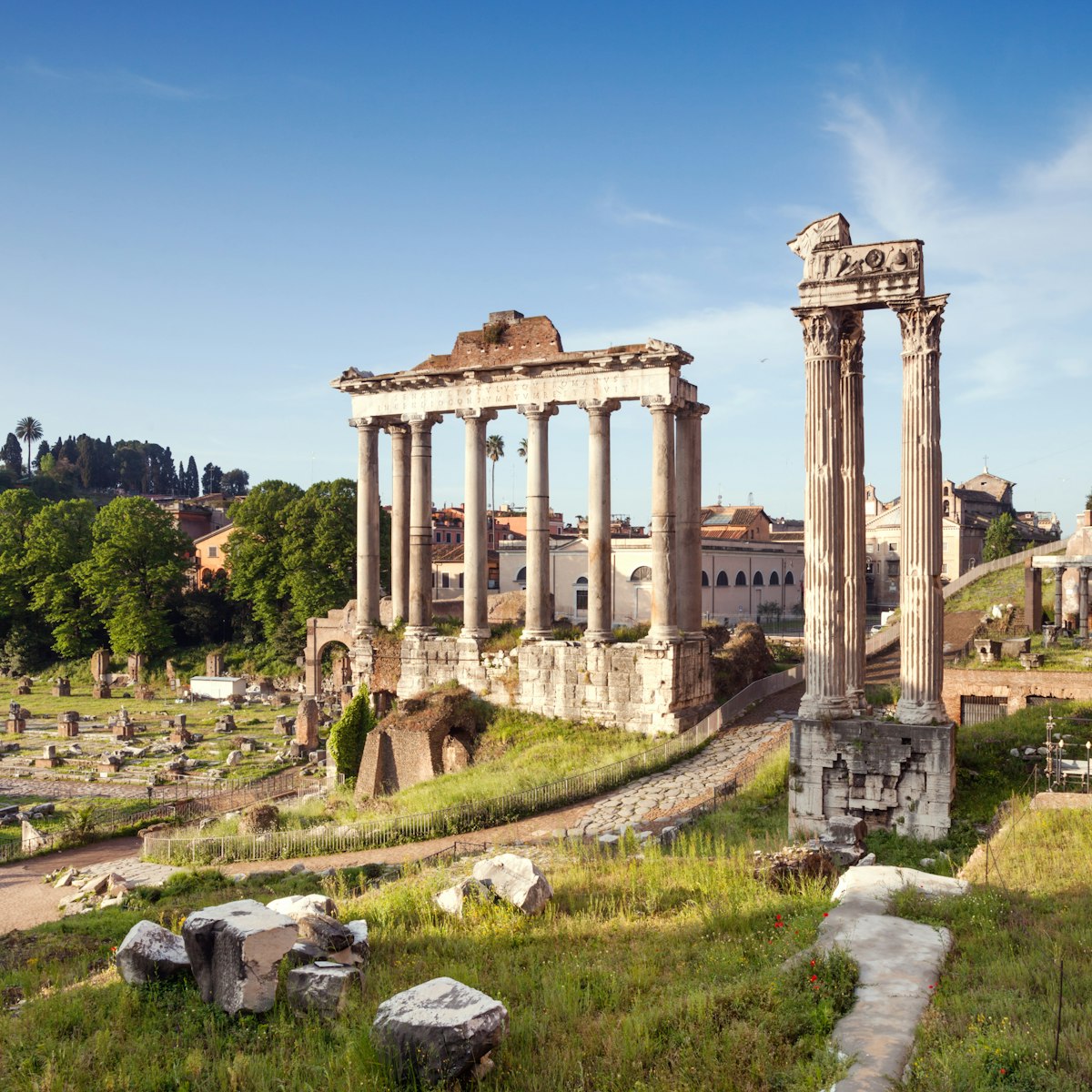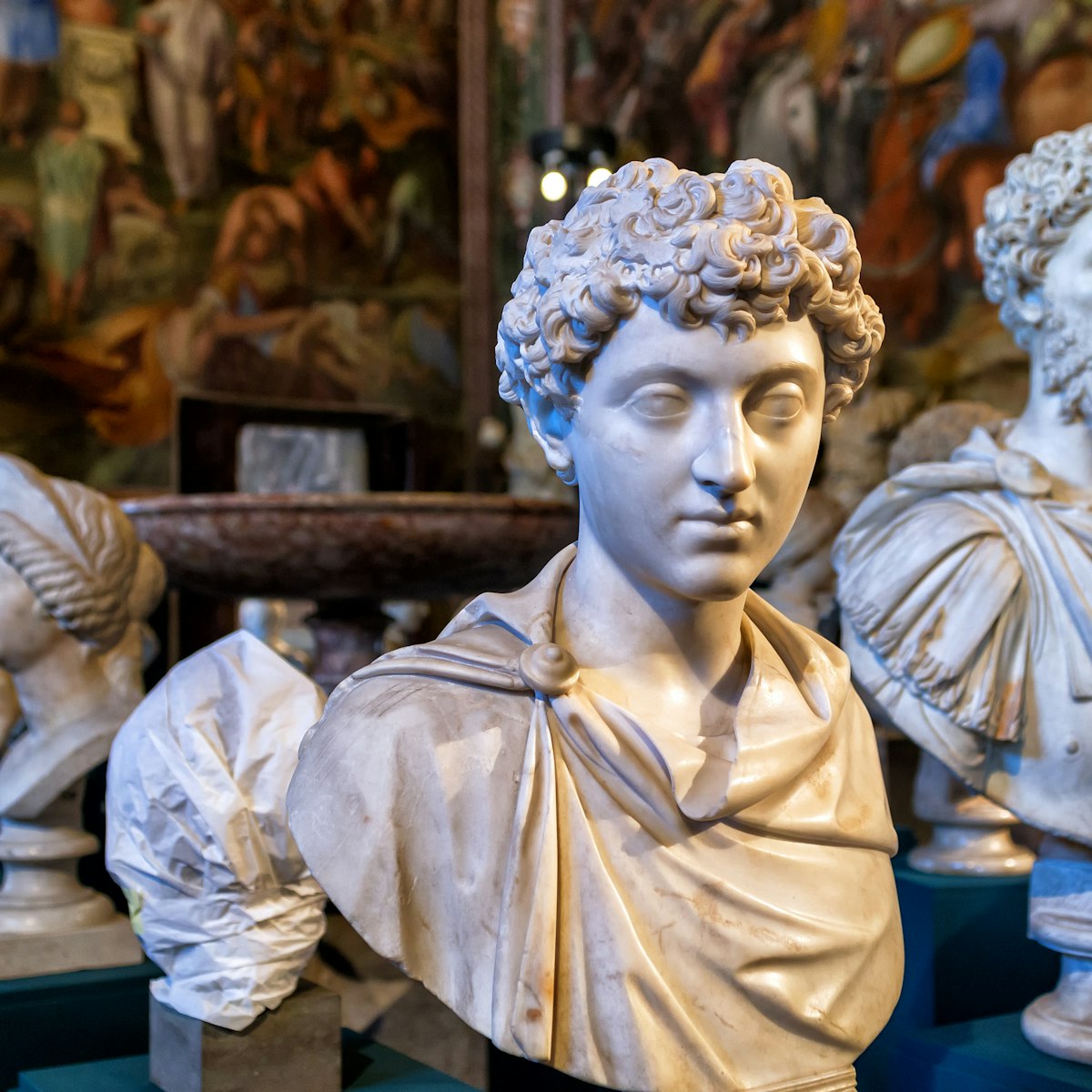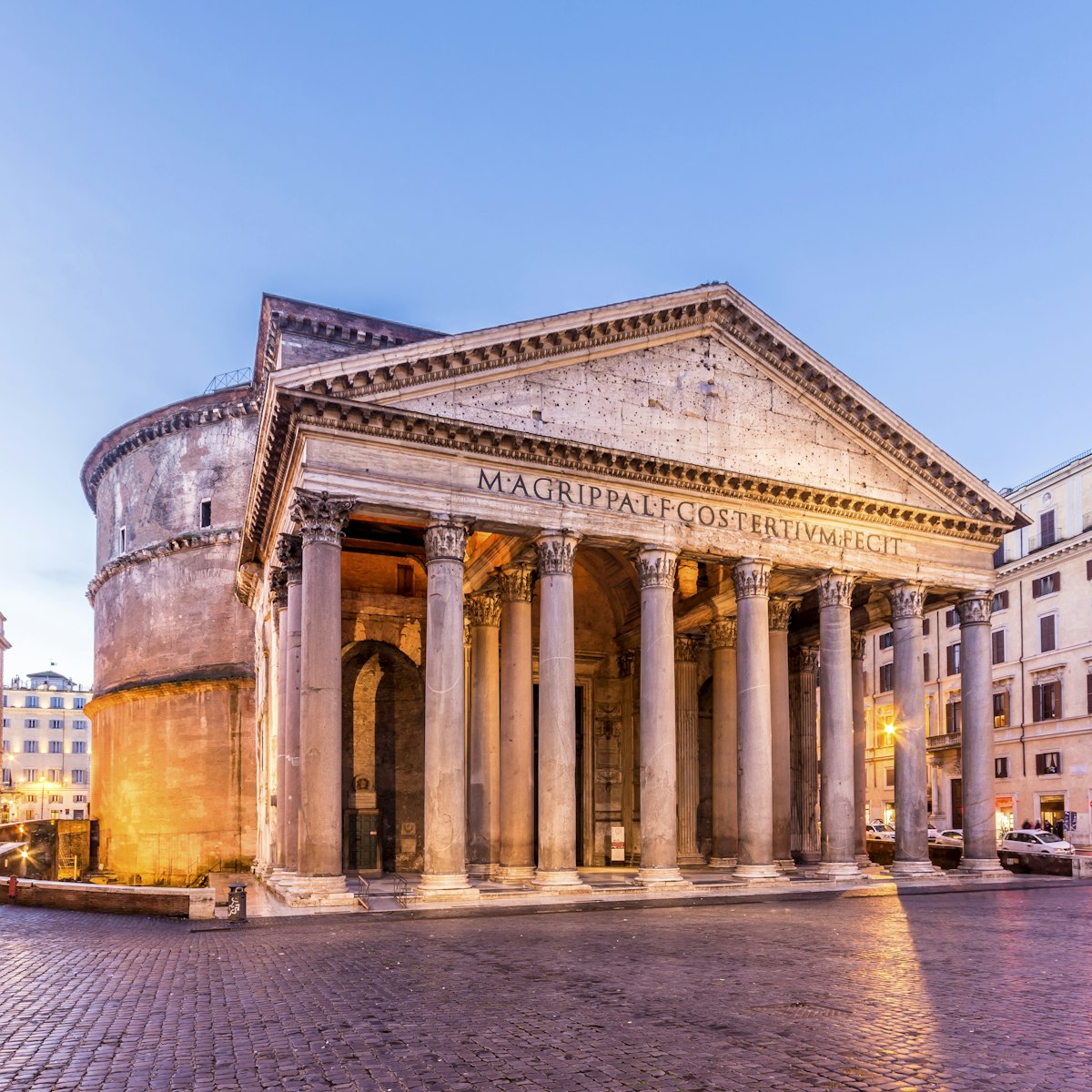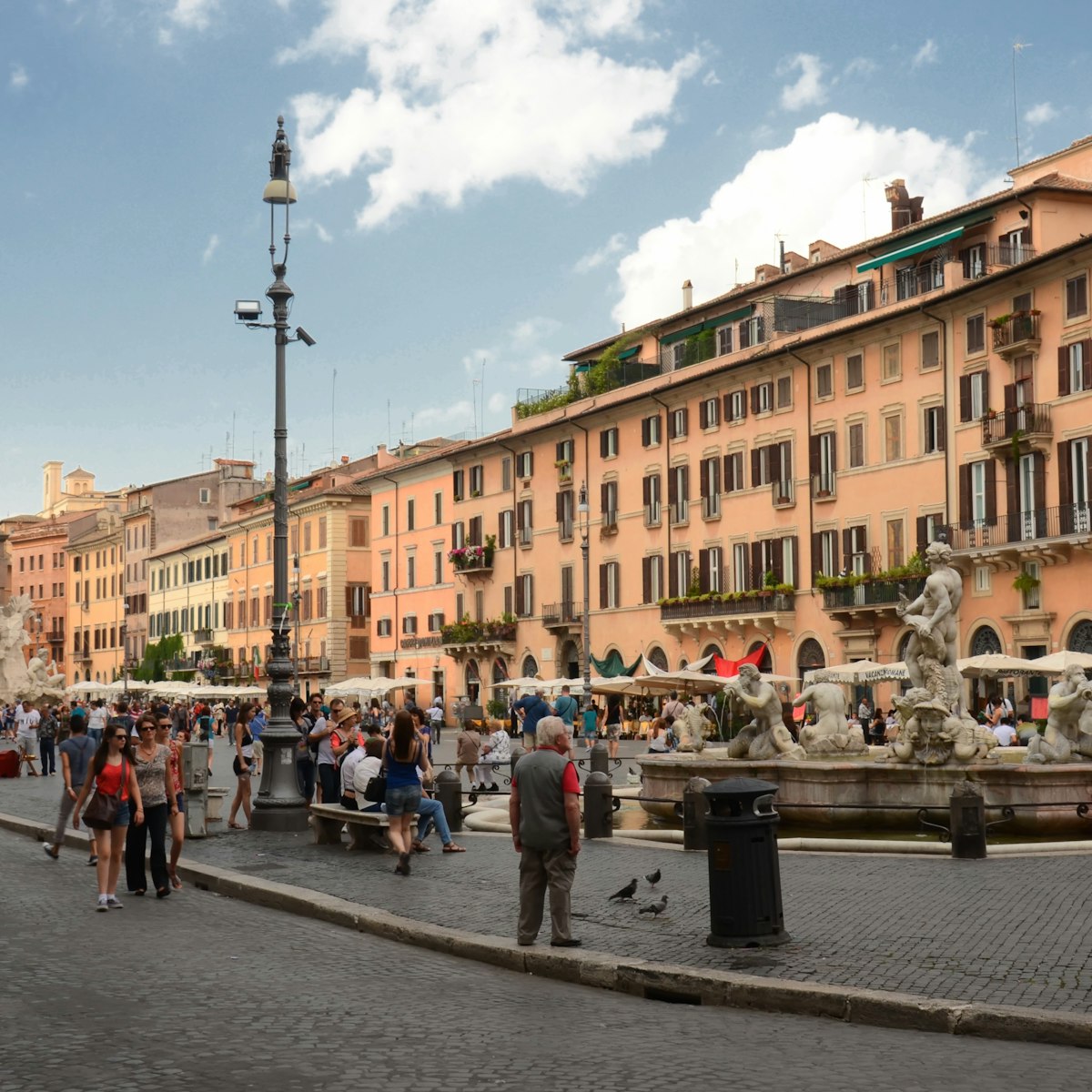For a thousand years this monumental cathedral was the most important church in Christendom. Commissioned by the emperor Constantine and consecrated in AD 324, it was the first Christian basilica built in Rome and, until the late 14th century, was the pope’s main place of worship. It's still Rome’s official cathedral and the pope’s seat as the bishop of Rome.
History
The Basilica of San Giovanni in Laterano was built on the foundation of a previous religious structure, the church of San Salvatore, erected following an edict of Constantine, who had legalized freedom of worship and recognized Christianity as a legitimate religion that could be practiced in the empire.
Over the centuries, the basilica was heavily damaged and reconstructed multiple times following conflicts and invasions. The current structure dates back to the 17th century, when Pope Alexander VII commissioned a new design from Francesco Borromini, one of Rome’s most revered architects at the time, for the 1650 Jubilee. Borromini managed to keep some of the elements of the earlier architecture that remain visible today, including the floor, the apse mosaic, and the ciborium. The facade would be added at a later stage – Alessandro Galilei completed it in 1732.
Visiting the basilica
This towering structure, surmounted by 157m-high (515ft) statues – Christ, St John the Baptist, John the Evangelist and the 12 Apostles – is an imposing example of late-baroque classicism. The central bronze doors in the porch were moved here from the Curia in the Roman Forum, while, on the far right, the Holy Door is only opened in Jubilee years.
The cavernous interior is a breathtaking sight with a golden gilt ceiling, a 15th-century mosaic floor, and a wide central nave lined with muscular 4.6m-high (15ft) sculptures of the apostles.
At the head of the nave, the Gothic baldachin over the papal altar is said to contain the relics of the heads of Saints Peter and Paul. In front, a double staircase leads down to the confessio where you'll see a wooden statue of St John the Baptist and the Renaissance tomb of Pope Martin V.
Behind the altar, the massive apse is decorated with sparkling mosaics. Parts of these date from the 4th century, but most were added in the 1800s. To the right of the apse, through a small gift shop, the Museo del Tesoro contains a small collection of religious artifacts and vestments.
At the other end of the basilica, on the first pillar in the right-hand aisle, is an incomplete Giotto fresco. While admiring this, cock your ear towards the next column, where a monument to Pope Sylvester II (r 999–1003) is said to sweat and creak when the death of a pope is imminent.
Outside the church, the beautiful 13th-century cloister, accessible to the left of the altar, is a lovely, peaceful place with graceful twisted columns set around a central garden.
Tips and other practicalities
Entering the basilica is free. If time allows it’s worth visiting the museum of Palazzo Lateranens as well – the collection of liturgical furnishings, religious artworks and objects that belong to Popes of the past is an insightful journey into the history of the Catholic Church. Tickets for guided tours cost €17.50 and can be purchased via the official website of the museum.
